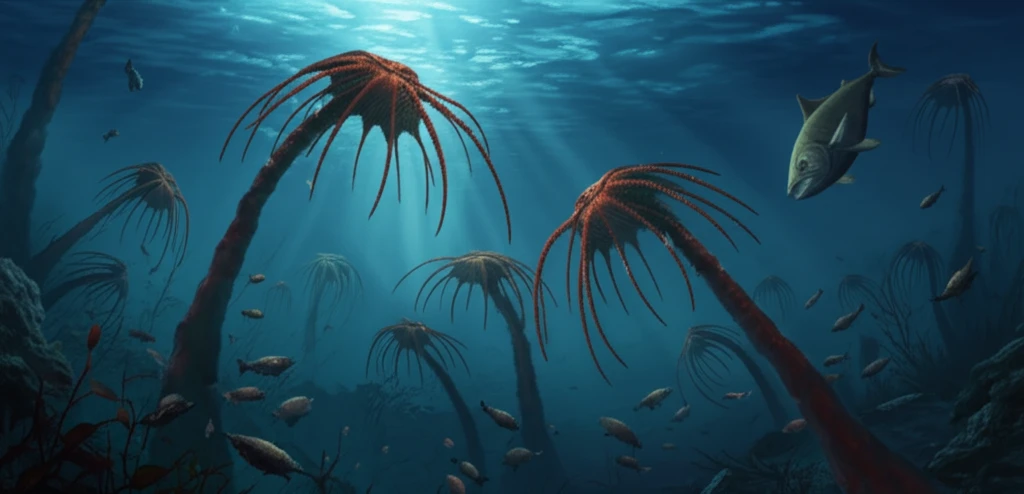
Unlocking Ancient Mysteries: How Crinoid Fossils Reveal Evolutionary Secrets
"Fossilized crinoid spines offer compelling evidence of predator-prey dynamics and adaptation over millions of years."
Imagine diving into an ancient ocean, teeming with life forms both familiar and strange. Among these, crinoids, often called 'sea lilies,' swayed gently in the currents. These marine animals, relatives of starfish and sea urchins, have a long and rich history, dating back hundreds of millions of years. While their soft bodies rarely fossilize, their skeletal remains, particularly their spines, offer a unique window into the past.
Fossilized crinoid spines are not just pretty rocks; they're time capsules containing valuable information about the ecosystems in which these creatures lived. In particular, the study of spine regeneration – the ability of a crinoid to regrow a damaged spine – provides direct evidence of predation attempts. The frequency and patterns of regeneration can tell us about the intensity of predation pressure and the evolutionary adaptations crinoids developed to survive in a dangerous world.
Recent research focusing on crinoid spines from the Upper Pennsylvanian period in eastern Ohio has uncovered some remarkable findings. These ancient spines exhibit evidence of repeated regeneration, suggesting that these crinoids were frequently targeted by predators. This discovery sheds new light on the predator-prey dynamics of the time and the evolutionary strategies crinoids employed to thrive amidst constant threats.
Repeated Regeneration: A Sign of the Times

The study, conducted by James R. Thomka and Donald B. Eddy, examined brachial spines (small, rod-like structures extending from the arms) of pirasocrinid crinoids from the Ames Member of the Glenshaw Formation. What makes these spines so special is the evidence of multiple regeneration events. In some specimens, size discontinuities along the length of the spine indicate that they had been broken and regrown not once, but multiple times during the crinoid's lifespan.
- High Predation Intensity: The frequency of regeneration suggests a high level of predation in the Upper Pennsylvanian seas of eastern Ohio.
- Predator-Driven Evolution: The constant threat of predation may have been a driving force in the evolution of crinoid morphology, favoring traits that enhanced survival.
- Ecosystem Dynamics: Understanding predator-prey relationships helps us reconstruct the complex web of life in ancient ecosystems.
- Adaptation Strategies: Crinoids may have developed unique defense mechanisms, such as increased spinosity, to deter predators or minimize damage from attacks.
More Than Just Fossils: A Glimpse into Evolutionary History
The study of crinoid spine regeneration provides a fascinating glimpse into the evolutionary history of these ancient creatures. By analyzing the patterns of breakage and regrowth, scientists can reconstruct the predator-prey dynamics of ancient ecosystems and gain a better understanding of the selective pressures that shaped the evolution of crinoid morphology. This research underscores the importance of studying fossils, not just as static objects, but as dynamic records of life's ongoing struggle for survival.
